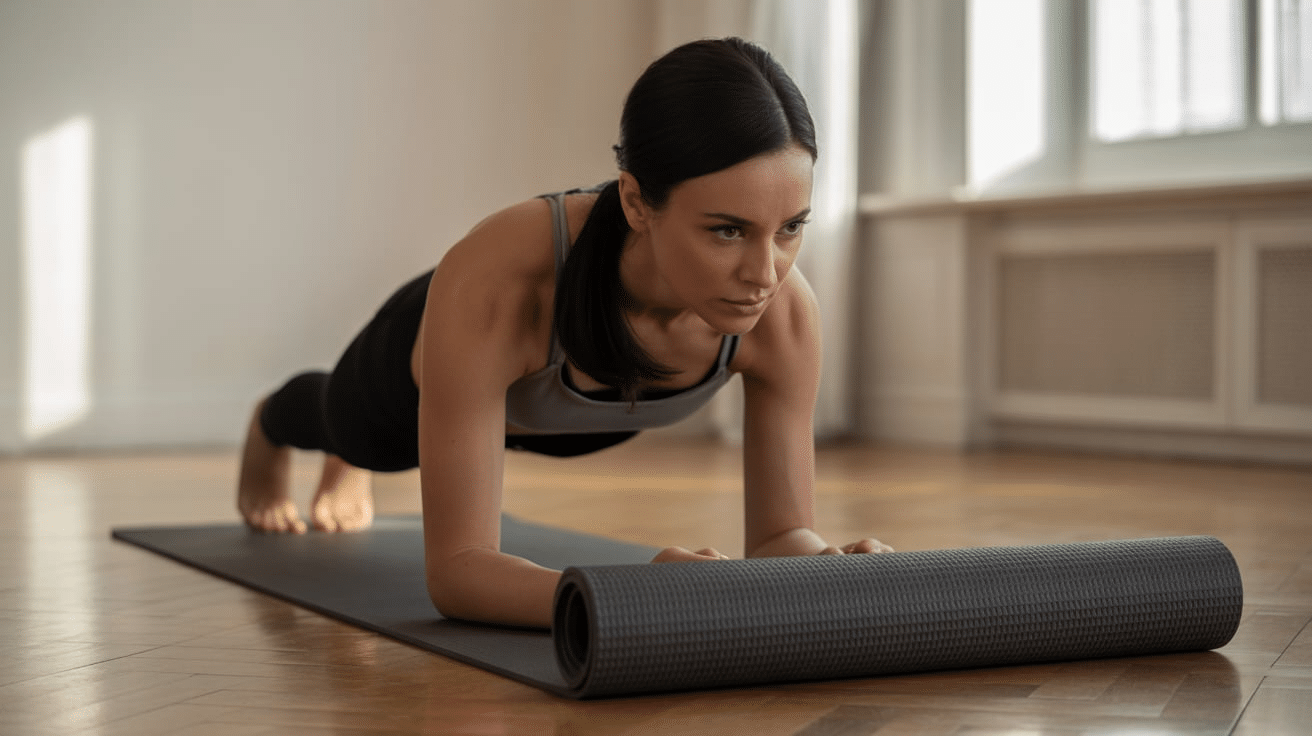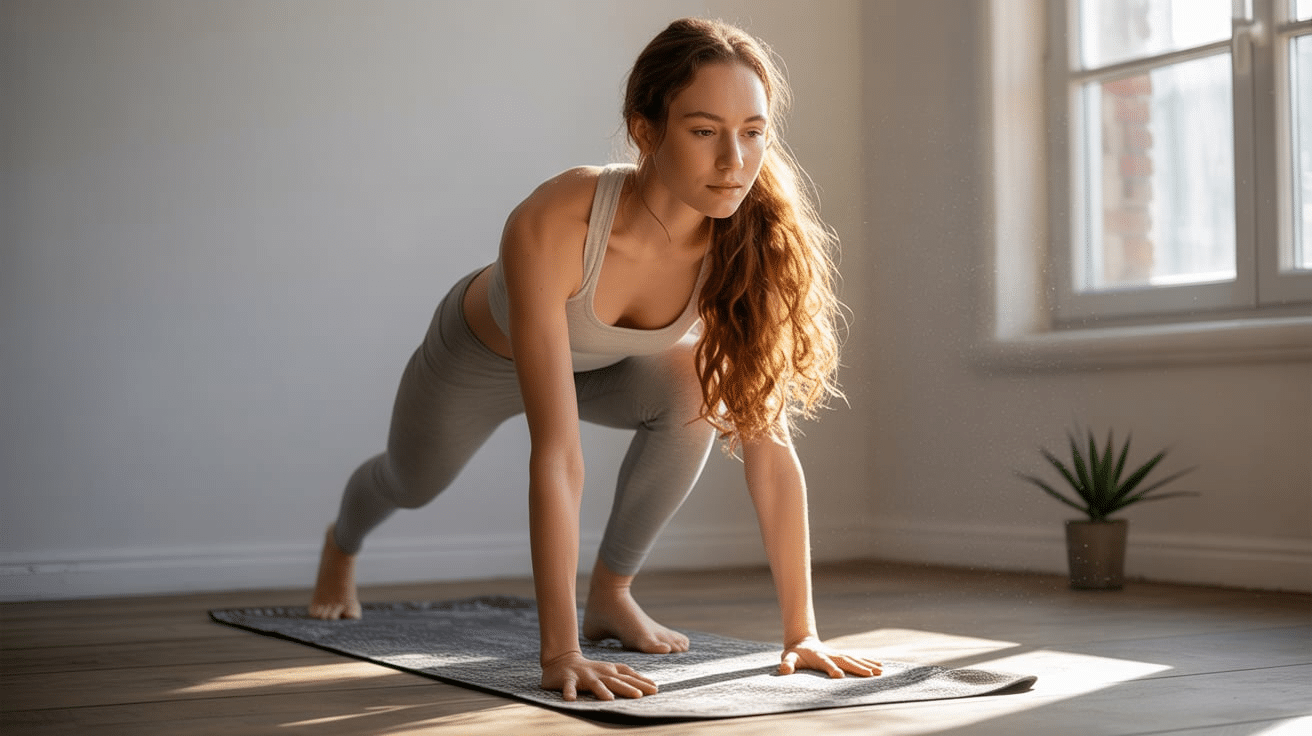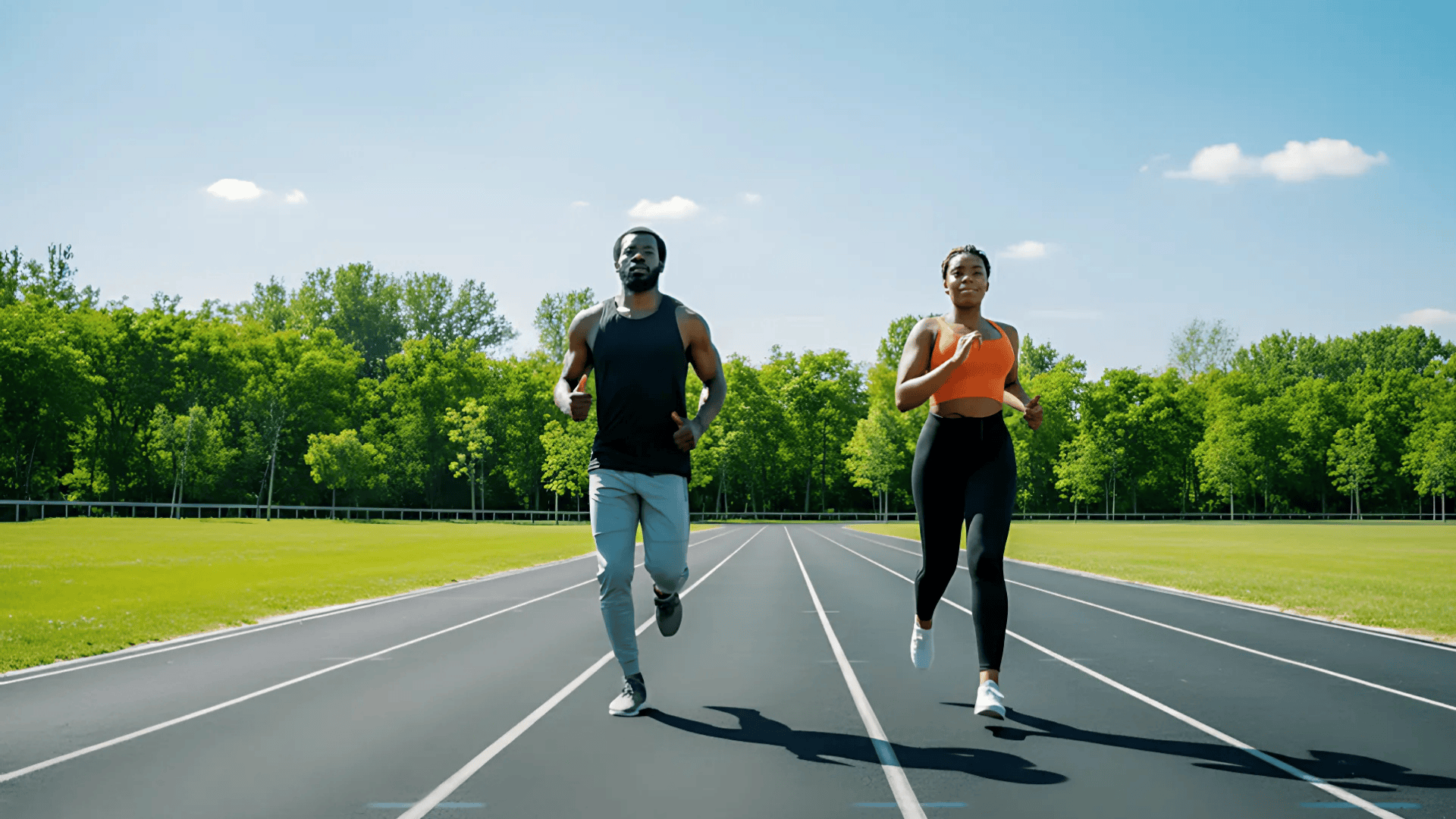I know how tricky it can feel to stay active when life keeps you busy. Some days you walk a lot, other days you barely move, and it’s hard to know if you’re doing enough for your health.
That’s where understanding the 5 health-related components of fitness comes in. Think of them as building blocks that keep your body strong, flexible, and ready for daily life.
In this blog, I’ll walk you through each of the key fitness components, how they connect to your overall health, and simple ways you can start testing and training them. By the end, you’ll have a clear plan that actually fits into your routine.
What are the 5 Health-Related Components of Fitness?
Health-related fitness focuses on components that directly impact your overall health and daily function, unlike skill-related fitness, which emphasizes athletic performance and coordination.
These five elements form a complete fitness profile supporting longevity and quality of life.
The 5 Components:
- Cardiovascular Endurance: Heart and lung efficiency
- Muscular Strength: Maximum force production
- Muscular Endurance: Sustained muscle performance
- Flexibility: Range of motion in joints
- Body Composition: Ratio of muscle to fat tissue
A well-rounded fitness program should address all five components rather than focusing on just one or two. Balanced development across these areas creates the foundation for lifelong health and functional movement.
Component 1: Cardiovascular Endurance

Cardiovascular endurance is your heart, lungs, and circulatory system’s ability to deliver oxygen efficiently during sustained physical activity.
This foundational fitness component powers every movement and daily task, from climbing stairs to playing with children.
Strong cardiovascular health reduces heart disease risk, lowers blood pressure, improves mental clarity, and provides the stamina needed for an active lifestyle. It’s the engine that fuels all other fitness achievements.
- Examples: Running, cycling, swimming, brisk walking, dancing, rowing, and stair climbing.
- How to Improve It: Perform 150 minutes of moderate aerobic exercise weekly or include 2-3 HIIT sessions with gradual progression.
Component 2: Muscular Strength

Muscular strength is the maximum force a muscle or muscle group can exert in a single effort. This component is essential for supporting daily activities like lifting groceries, moving furniture, or getting up from chairs.
Strong muscles protect joints from injury, improve posture, boost metabolism, and maintain bone density as we age.
Without adequate strength, simple tasks become challenging, and injury risk increases significantly during physical activities.
- Examples: Weightlifting, resistance band workouts, push-ups, pull-ups, squats, and bodyweight exercises.
- How to Improve It: Use progressive overload with strength training routines 2-3 times weekly, focusing on compound movements.
Component 3: Muscular Endurance

Muscular endurance is the ability of a muscle or muscle group to sustain repeated contractions over extended periods without fatigue.
This component is crucial for maintaining proper posture throughout the day, providing stability during movement, and improving athletic performance in activities requiring sustained effort.
Good muscular endurance prevents muscle fatigue during daily tasks, reduces back pain, and allows you to stay active longer without experiencing premature exhaustion or form breakdown.
- Examples: Planks, squats, rowing, bodyweight circuits, push-ups, and wall sits.
- How to Improve It: Use circuit training and lighter weights with higher repetitions (15-20 reps) performed 2-3 times weekly.
Component 4: Flexibility

Flexibility is the range of motion available at a joint or group of joints during movement. This component is vital for reducing injury risk, improving daily mobility, and maintaining proper posture as we age.
Good flexibility allows muscles and joints to move through their full range, preventing stiffness and compensatory movement patterns.
It increases athletic performance, reduces muscle tension, and makes everyday activities like reaching overhead or bending down feel effortless and comfortable.
- Examples: Yoga, dynamic stretching, static stretching, foam rolling, and Pilates.
- How to Improve It: Incorporate daily stretching routines and mobility exercises, holding stretches for 15-30 seconds post-workout.
Component 5: Body Composition

Body composition is the ratio of fat mass to lean body mass, including muscles, bones, and organs. This component is crucial for effective weight management and reducing the risk of chronic diseases like diabetes and heart disease.
Unlike simple weight measurements, body composition provides insight into your health status and fitness level.
A healthy body composition with higher muscle mass boosts metabolism, improves physical appearance, and improves overall functional capacity for daily activities.
- Examples of Measurement: BMI calculations, skinfold tests, DEXA scans, bioelectrical impedance analysis, and waist-to-hip ratio.
- How to Improve It: Combine balanced nutrition with strength training and cardiovascular exercise for optimal fat loss and muscle preservation.
How do the 5 Components Work Together?
Balance among all five fitness components is essential because they support and promote each other for optimal health and performance.
Neglecting any component creates weaknesses that limit overall fitness potential and increase injury risk.
For example, a runner needs cardiovascular endurance to maintain pace, muscular endurance to sustain proper form, flexibility to achieve efficient stride mechanics, muscular strength to power uphill climbs, and healthy body composition to reduce joint stress.
Without this balance, even dedicated athletes face plateaus, injuries, and suboptimal performance despite training hard in their preferred area.
Practical Tips to Improve Overall Fitness
Building comprehensive fitness doesn’t require complicated programs or endless hours at the gym. These simple strategies will help you develop all five components efficiently while maintaining a sustainable routine.
- Create a balanced weekly schedule with 3 cardio sessions, 2-3 strength workouts, and daily flexibility work
- Prioritize rest and recovery by scheduling 1-2 complete rest days and getting 7-9 hours of quality sleep
- Fuel your body properly with balanced nutrition to support energy levels and healthy body composition
- Start small and progress gradually to build consistency before increasing intensity or duration
- Track your progress across all five components to identify strengths and areas needing improvement
Consistency beats perfection every time. Focus on building sustainable habits that address all fitness components rather than pursuing extreme measures in just one area.
Common Mistakes to Avoid
| Mistake | Why It’s a Problem | Simple Fix |
|---|---|---|
| Only doing cardio | Neglects muscle and bone strength, leading to slower metabolism and reduced overall fitness. | Add 2–3 strength training sessions per week using compound movements like squats and deadlifts. |
| Static stretching before workouts | Reduces power output and increases the risk of injury when done before muscles are warm. | Warm up with dynamic movements such as leg swings and arm circles; save static stretches for after workouts. |
| Focusing only on scale weight | Creates frustration since the scale doesn’t show fat loss, muscle gain, or strength progress. | Track waist measurements, take progress photos, and monitor energy levels and workout performance. |
Wrapping It Up
Understanding the 5 health-related components of fitness gives you a clear path to better health. Instead of guessing what to focus on, you now know how cardio, strength, endurance, flexibility, and body composition work together.
I’ve found that the easiest way to make progress is to keep things simple.
Choose small steps you can repeat, and measure how your body feels along the way. Your plan doesn’t have to be perfect; it just has to be consistent.
If you’d like more ideas to keep your routine fresh and practical, take a look at my other posts. You may find tips that fit right into your lifestyle.





